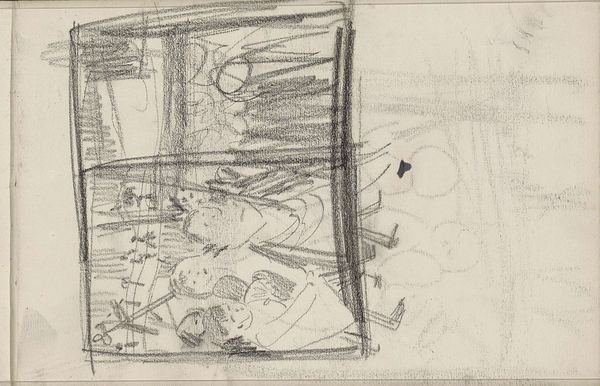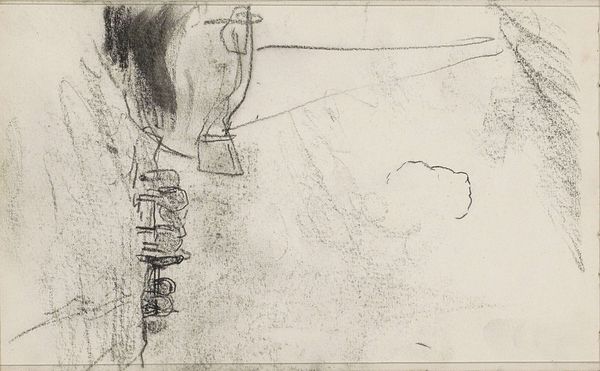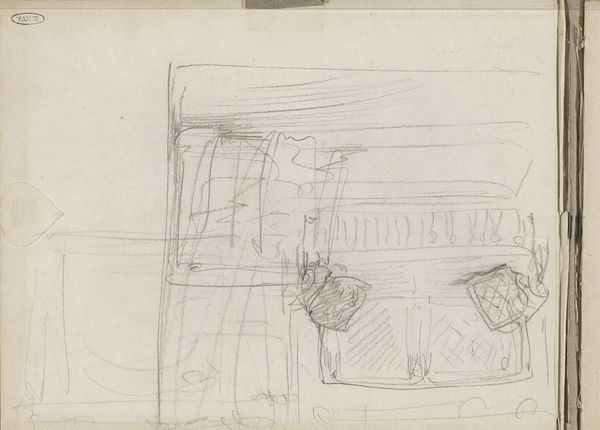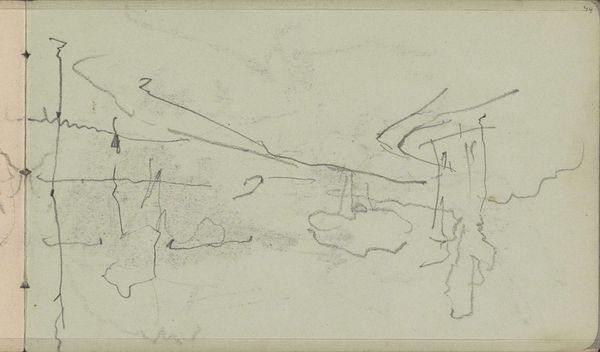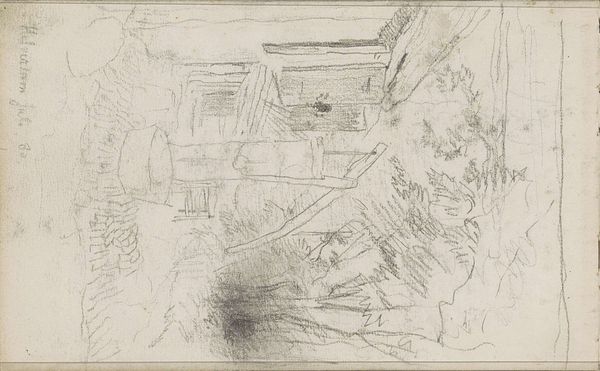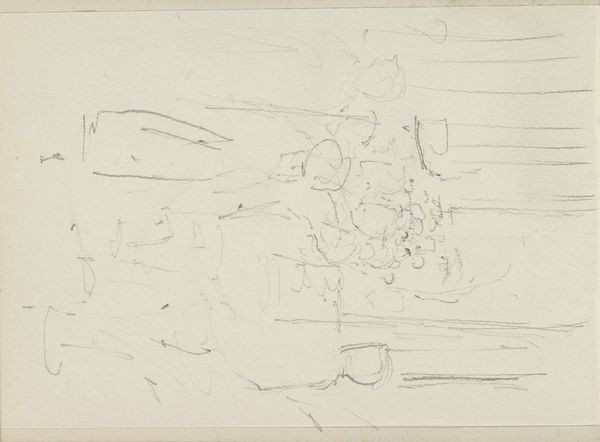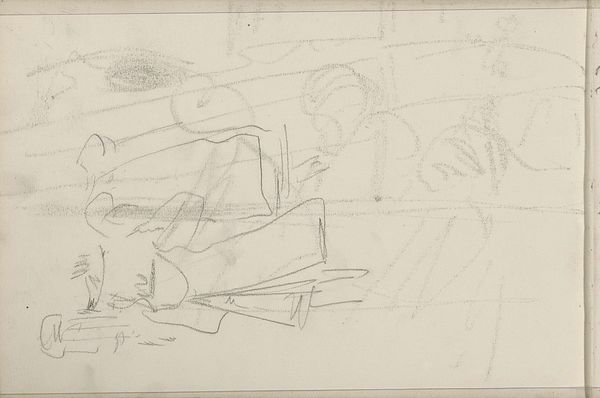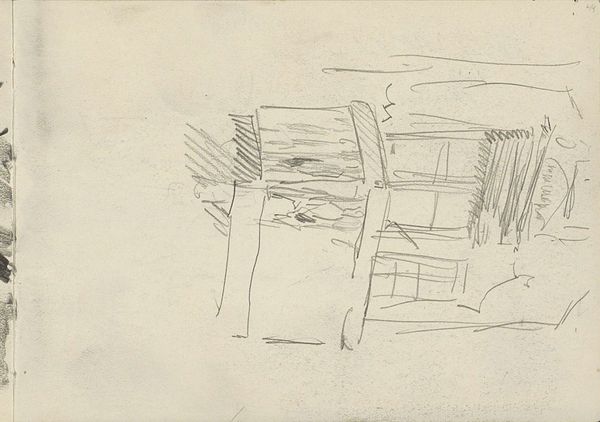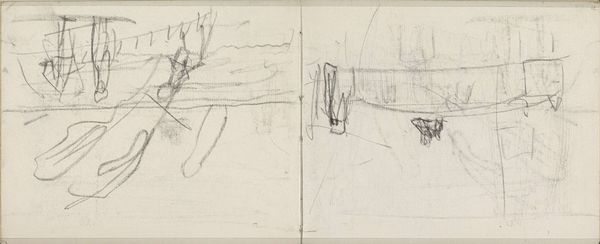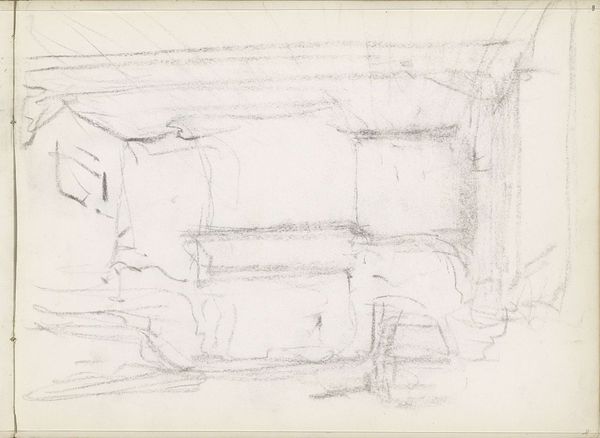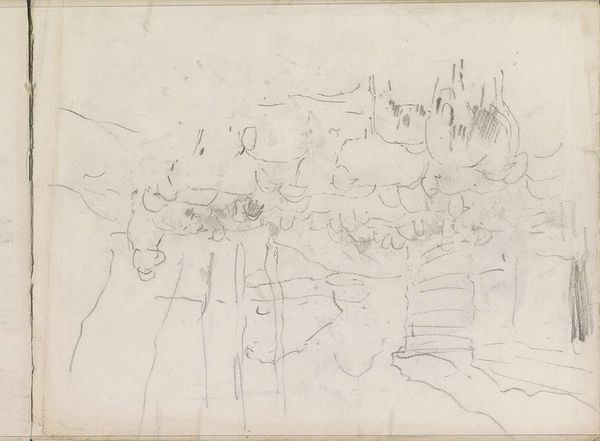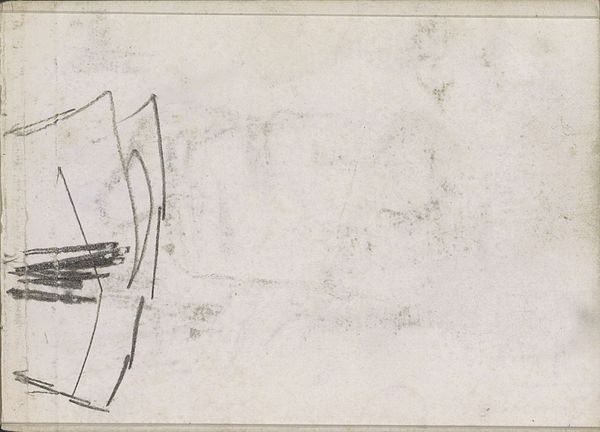
drawing, pencil
#
drawing
#
light pencil work
#
quirky sketch
#
dutch-golden-age
#
impressionism
#
landscape
#
personal sketchbook
#
idea generation sketch
#
sketchwork
#
ink drawing experimentation
#
pen-ink sketch
#
pencil
#
sketchbook drawing
#
sketchbook art
#
realism
#
initial sketch
Copyright: Rijks Museum: Open Domain
Curator: This delicate drawing is titled "Studie," and it's by Anton Mauve. It resides here at the Rijksmuseum, and the artwork likely dates somewhere between 1848 and 1888. It seems to be created with pencil. What's your immediate reaction? Editor: It feels ephemeral, like a fleeting thought captured just before it vanishes. The sketch lines are so light; there is this deliberate rawness in its execution. It seems more concerned with the gesture of observation than precise rendering. Curator: Precisely! Given the timeframe and Mauve’s affiliation with the Hague School, it perhaps shows the intersection between Realism's commitment to depicting the ordinary and Impressionism's focus on light and atmospheric conditions. This aesthetic choice is significant, shifting focus from the thing depicted towards its mood and psychological effect. Editor: You’ve hit on something key – its atmospheric quality. Notice the subtle gradations in tone achieved through minimal pencil strokes; it evokes a misty, almost dreamlike atmosphere. This isn’t just a study of form but a meditation on atmosphere. Semiotically, we are looking at absence over presence here. Curator: Look closer – do you see a figure, maybe even indoors? Editor: It seems there’s an interior depicted. There is something architectural above what appear to be vertical linear forms. So this adds another dimension. If we consider drawing as an exercise of "seeing," what is Mauve asking us to really notice and remember? How is this an example of generative, on-site or "plein air" ideation in the mind of this particular Dutch master? Curator: Mauve was Vincent van Gogh’s cousin-in-law and significantly impacted the younger artist. These light sketches of the everyday and landscape—an early investigation that, through symbols of domesticity—led van Gogh, in turn, to find the spiritual and beautiful in such things, to depict the peasant not as a figure of labour but one interwoven with the life cycle and Dutch soil. Editor: A fascinating thought to conclude on. I am more interested in the interplay between line and negative space. Curator: And I on how artists interpret their cultures and create lasting emblems through very preliminary strokes.
Comments
No comments
Be the first to comment and join the conversation on the ultimate creative platform.
